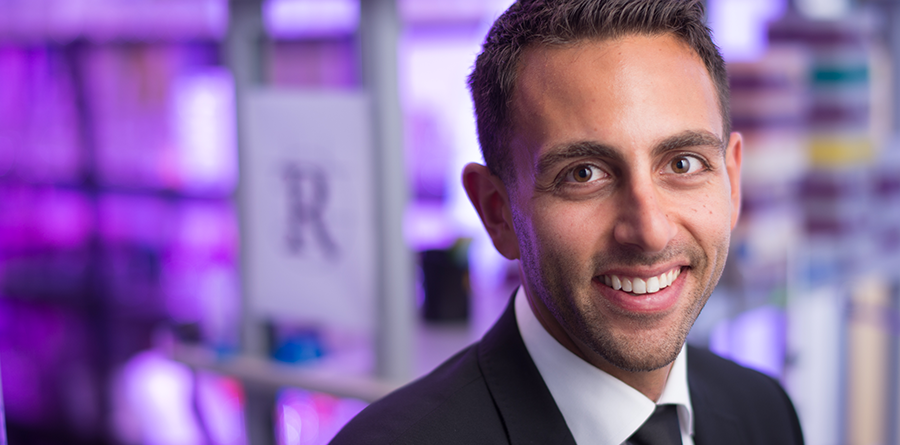Biochem alumnus sees big potential for tiny yeast
September 30, 2018

September 30, 2018

Biochemist and molecular biologist Matthew Dahabieh (BSc 06’, MSc 08’, PhD 13’) originally planned to head to medical school, but along the way got sidetracked by a tiny but mighty microorganism. Now Dahabieh is on the lookout for problems he can solve with yeast.
Looking for opportunities in scientific research, I studied yeast strains used in wine production early on. But then I made a complete switch and focused on HIV biology. I was doing a postdoc in San Francisco when I got a phone call. The researcher I’d worked for studying yeast strains was starting a company and said asked me to come work for him. This is why it’s important to build a network—you never know where you’ll find an opportunity.
Many people don’t realize it, but yeast is one of the most important industrial microorganism out there. It’s used in wine, beer, cider, not to mention fermented and leavened foods. But it’s also a vital part of the bio-economy, including biofuels, agricultural tech and even human therapeutics. One of the key things our company does is unlock the huge range of yeast biodiversity. Since the 1800s, industry has focused on a very small set of strains that are useful for industry, and now there’s a bottleneck in yeast biodiversity—industrialized strains tend to be very similar to one another.
Renaissance BioScience is a fermentation sciences company. What we do is harness natural yeast biodiversity—through selective breeding and adaptive evolution—to accelerate the ability to domesticate yeast. This allows us to create optimized, high-performance yeasts with novel properties for all sorts of uses and industries.
A chief science officer is responsible for the overall scientific program of an organization—and that’s pretty multi-faceted. In addition to managing the current R&D work going on, I’m also on the lookout for technology opportunities. I read a lot of academic and industrial literature, trying to find problems out there that yeast can solve. There’s also a fundraising component as I work with funding agencies like NRC-IRAP and Mitacs to augment our R&D resources. There’s also intellectual property management. We patent out strains and processes, and I’m responsible for organizing and leading those initiatives. Lastly, there’s also a large human resources and management component: we have 17 people in research and development and 24 people total.
UBC Science alumni, do you have an interesting career path, story or hobby you’d like to tell us about? E-mail us and we could feature you on our website.
We honour xwməθkwəy̓ əm (Musqueam) on whose ancestral, unceded territory UBC Vancouver is situated. UBC Science is committed to building meaningful relationships with Indigenous peoples so we can advance Reconciliation and ensure traditional ways of knowing enrich our teaching and research.
Learn more: Musqueam First Nation